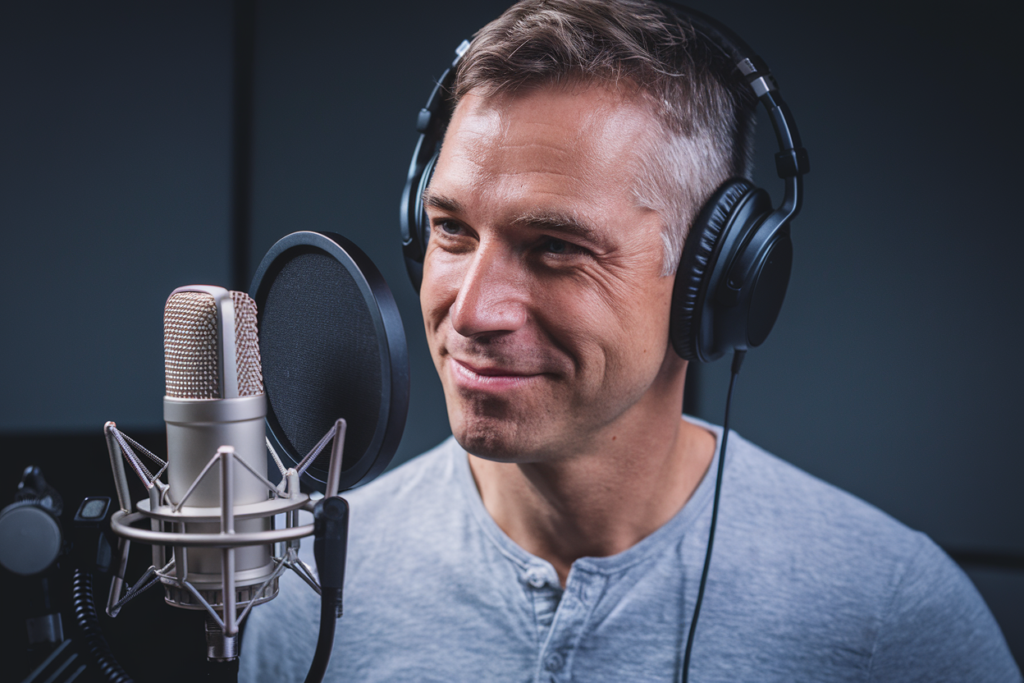Key Takeaways
- Importance of Quality Standards: British English dubbing relies on high-quality audio, accurate translations, and skilled voice acting to enhance the viewer’s experience.
- Cultural Adaptation: Effective dubbing goes beyond translation; it involves understanding cultural nuances and regional accents to create relatable content.
- Technical Expertise: Key technical aspects such as sound quality and synchronization are crucial for achieving seamless and engaging dubbed video content.
- Challenges Faced: Voice actors must navigate regional variations in accents and meet audience expectations to maintain authenticity and emotional depth in performances.
- Future Trends: The future of British English dubbing includes a focus on authenticity, advances in technology, diverse talent selection, and the integration of local cultural elements to cater to an expanding audience.
Ever wondered why some video content feels more engaging when dubbed in British English? The secret lies in the dubbing standards that shape how stories are told across cultures. With a growing demand for localized content, understanding these standards is crucial for creators and viewers alike.
British English dubbing isn’t just about translating words; it’s about capturing nuances, accents, and cultural references that resonate with audiences. When done right, it enhances the viewing experience and ensures your message hits home. So if you’re looking to elevate your projects or simply want to appreciate the art of dubbing more deeply, let’s dive into what sets British English dubbing apart and why it matters more than ever.
Overview of British English Dubbing Standards for Video
British English dubbing standards focus on delivering high-quality audio that enhances the viewing experience. These standards include precise voiceover techniques, ensuring that dialogue syncs perfectly with lip movements and emotional cues. Voice actors must possess a deep understanding of regional accents, cultural nuances, and idiomatic expressions to create authenticity.
Voice talent in British English dubbing often undergoes extensive training. They develop skills in modulation, pacing, and character interpretation to effectively convey emotions and context. This expertise allows them to connect with audiences on a deeper level.
When selecting voice artists for projects, consider their ability to adapt performances based on content type. Whether it’s drama or comedy, a good voice over actor adjusts tone and delivery accordingly. This flexibility ensures that the final product resonates well with viewers.
Incorporating sound effects and background music plays an important role too. These elements should complement the voiceovers without overshadowing them. A balanced mix creates an immersive experience that draws audiences into the story.
Quality control is essential throughout the dubbing process. Regular reviews help ensure consistency in performance and adherence to established standards. The goal is always to deliver a product that not only meets but exceeds audience expectations, enriching their overall engagement with the video content.
Understanding these key aspects of British English dubbing can guide you when choosing talented professionals for your projects. Prioritizing skilled voice over talent will enhance your productions while making sure they resonate culturally with targeted audiences.
Key Principles of Dubbing
Dubbing in British English requires adherence to several key principles that enhance the viewer’s experience. Understanding these principles can help you appreciate the depth and skill involved in quality dubbing.
Accuracy of Translation
Accuracy ranks at the top when it comes to dubbing standards. Your audience expects a faithful representation of the original content, so it’s essential to ensure that dialogues translate not just words but also emotions. Voice actors engage with scripts deeply, capturing subtleties that maintain the original’s intent. They work closely with translators to deliver lines that resonate authentically with viewers while syncing perfectly with lip movements on screen.
Cultural Adaptation
Cultural adaptation plays a crucial role in making dubbed content relatable. You might wonder how something as simple as voiceover talent can change a scene’s impact. Skilled voice artists understand regional nuances and cultural references, allowing them to infuse their performances with elements familiar to local audiences. This connection fosters engagement and makes narratives more compelling, ensuring that humor lands appropriately or emotional moments resonate effectively. By focusing on cultural relevance, dubbing becomes an art form rather than just a technical task.
Understanding these principles not only highlights the craftsmanship behind British English dubbing but also underscores its importance in creating engaging video content for diverse audiences.
Technical Aspects of Dubbing
Understanding the technical aspects of dubbing is essential for achieving high-quality video content. This section highlights key elements that ensure your dubbed materials resonate with audiences.
Sound Quality
Sound quality plays a critical role in the overall impact of any dubbed content. You want clear, crisp audio that captures every nuance of the voiceover performance. Using professional-grade microphones and soundproof recording environments minimizes background noise, allowing voice actors to deliver their lines with precision. High sample rates and bit depths enhance clarity, making dialogues more engaging and lifelike. Remember, poor sound quality can distract viewers from the story being told.
Synchronization Techniques
Synchronization techniques are vital for creating seamless dubbing experiences. Lip-sync accuracy ensures that dialogue matches mouth movements on screen, maintaining immersion for viewers. Timing is everything; skilled voice artists adjust their delivery to align perfectly with emotional cues in scenes. This attention to detail enhances connection between characters and audiences, making narratives more compelling. Utilizing specialized software tools helps achieve precise synchronization by visualizing audio waveforms alongside video frames.
By focusing on these technical aspects—sound quality and synchronization—you can elevate the standard of your British English dubbing projects, ensuring they captivate audiences effectively.
Challenges in British English Dubbing
British English dubbing faces several challenges that can impact the quality and effectiveness of video content. Understanding these obstacles helps you appreciate the nuances involved in creating engaging audio experiences.
Regional Variations
Regional variations in accents and dialects pose a significant challenge for voice actors. The UK is home to numerous accents, each with unique characteristics. A voice talent must master these regional differences to ensure authenticity in their performances. For instance, a voice actor from London may need to adapt their style when voicing content intended for audiences in Scotland or Northern Ireland. This adaptability enhances cultural resonance and ensures that local viewers connect with the material.
Audience Expectations
Audience expectations play a crucial role in British English dubbing. Viewers often seek an immersive experience where dialogue feels natural and relatable. To achieve this, voice artists must not only replicate the original performance but also capture the emotional depth behind it. Failing to meet these expectations can lead to disengagement from the audience, making it essential for voice over talent to understand the specific demands of different genres—whether it’s drama, comedy, or documentary styles.
By recognizing these challenges, you can better appreciate the skill required in British English dubbing and its impact on enhancing video content’s overall appeal.
Future Trends in British English Dubbing
British English dubbing is evolving rapidly, and several trends are shaping its future. Increased demand for localized content drives innovation in voiceover techniques and talent selection.
1. Emphasis on Authenticity
Authenticity remains central to successful dubbing. Voice actors focus on capturing the original performance’s emotional depth while integrating regional nuances. This attention to detail enhances engagement and ensures that dubbed content resonates with audiences.
2. Advances in Technology
Technology plays a crucial role in improving dubbing quality. Enhanced audio equipment and software streamline the recording process, making it easier to achieve crisp sound quality. Innovations like AI-assisted tools help match voiceovers more accurately with character lip movements, creating a seamless viewing experience.
3. Diverse Voice Talent Selection
Diversity among voice talents enriches the dubbing landscape. Clients increasingly seek out voice artists with unique accents or backgrounds to appeal to specific demographics. This shift not only broadens audience reach but also adds layers of cultural richness to the narratives being presented.
4. Integration of Cultural Elements
Integrating local cultural references into dubbed content is gaining traction as well. By weaving familiar elements into dialogue, voice actors enhance relatability for viewers, transforming standard translations into culturally resonant performances that feel native.
5. Growing Popularity of Streaming Platforms
The rise of streaming platforms fuels an unprecedented demand for high-quality dubbing across various genres—be it drama, comedy, or documentaries. With audiences expecting immersive experiences, skilled voice over talent becomes essential for captivating storytelling through effective dubbing practices.
By keeping these trends in mind, you can stay ahead of the curve when exploring options for British English dubbing projects while ensuring your content meets evolving viewer expectations effectively.
Conclusion
British English dubbing standards play a crucial role in delivering an engaging viewing experience. By emphasizing accuracy cultural adaptation and high-quality audio, skilled voice actors bring narratives to life in a way that resonates with audiences.
As the demand for localized content grows it’s essential to appreciate the artistry involved in dubbing. Understanding the nuances of regional accents and emotional depth not only enhances storytelling but also connects viewers more deeply with the material.
By investing in top-notch talent and adhering to established standards you can elevate your productions ensuring they meet audience expectations while fostering genuine engagement across diverse demographics.
Frequently Asked Questions
Why is British English dubbing considered more engaging?
British English dubbing feels more engaging because it captures cultural nuances, regional accents, and relevant references that resonate with viewers. This approach enhances storytelling by making the content relatable and immersive, allowing for a deeper emotional connection.
What are the key standards in British English dubbing?
Key standards in British English dubbing include high-quality audio production, precise voiceover techniques, and accurate lip-sync synchronization. Voice actors also need to master regional accents and cultural references to ensure authenticity and engage local audiences effectively.
How do voice actors enhance the dubbing experience?
Voice actors enhance the dubbing experience by capturing not just words but also emotions from the original content. They work closely with translators to ensure their performances reflect cultural nuances, adding depth and relatability to characters across different genres.
What technical elements are important in British English dubbing?
Technical elements crucial for British English dubbing include sound quality, synchronization accuracy, and clear audio production. Professional-grade equipment and soundproof environments help maintain immersion while ensuring that dialogue aligns seamlessly with visual cues.
What challenges do voice actors face in this field?
Voice actors face challenges such as mastering diverse accents and dialects for authenticity while replicating original performances’ emotional depth. Understanding audience expectations is vital since viewers seek natural-sounding dialogue that enhances their overall viewing experience.
How is technology impacting future trends in British English dubbing?
Technology is driving innovation in British English dubbing by improving voiceover techniques and expanding talent selection. The demand for localized content encourages authentic representation of local culture while streaming platforms increase the need for high-quality dubbed material across various genres.







